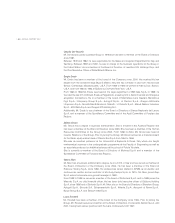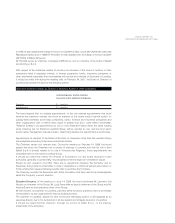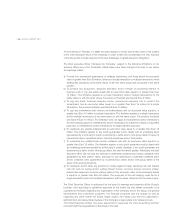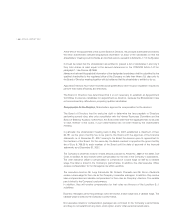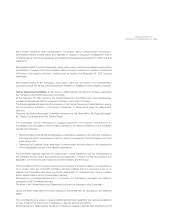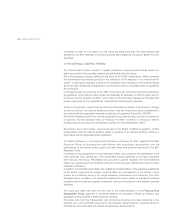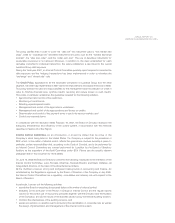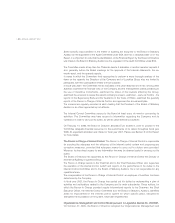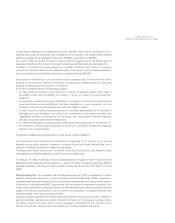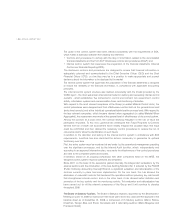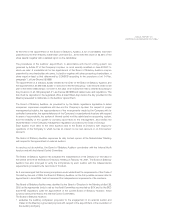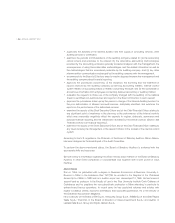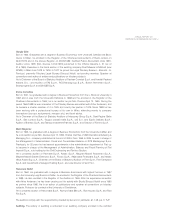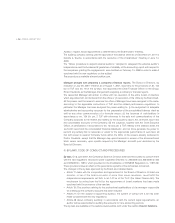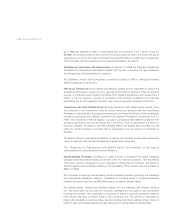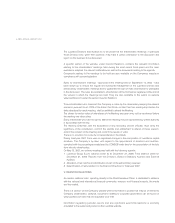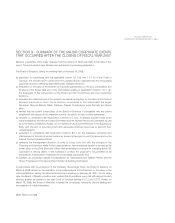LensCrafters 2007 Annual Report Download - page 95
Download and view the complete annual report
Please find page 95 of the 2007 LensCrafters annual report below. You can navigate through the pages in the report by either clicking on the pages listed below, or by using the keyword search tool below to find specific information within the annual report.> 94 | ANNUAL REPORT 2007
The goals of the control system have been defined consistently with the requirements of SOX,
which makes a distinction between the following two elements:
• Controls and procedures to comply with the duty of information related to the consolidated
financial statements and the Form 20-F (Disclosure controls and procedures-DC&P); and
• Internal control system that supervises the preparation of the financial statements (Internal
Control over Financial Reporting-ICFR).
The disclosure controls and procedures are designed to ensure that financial information is
adequately collected and communicated to the Chief Executive Officer (CEO) and the Chief
Financial Officer (CFO), so that they may be in a position to make appropriate and prompt
decisions about the information to be disclosed to the market.
The internal control system that supervises the preparation of the financial statements is designed
to ensure the reliability of the financial information, in compliance with applicable accounting
principles.
The internal control system structure was defined consistently with the model provided by the
COSO report - the most well-known international model for defining and assessing internal control
systems - which establishes five components: control environment, risk assessment, control
activity, information systems and communication flows, and monitoring of activities.
With respect to the most relevant companies of the Group (so-called Material Control Units), the
control procedures were designed and their effectiveness verified both at the general/cross level
(entity level controls) and at the individual operational/administrative process level. With respect to
the less relevant companies, which became relevant when aggregated (so called Material When
Aggregated), the assessment was made at the general level of effectiveness of the control system.
Among the controls at a cross level, the controls allowing mitigation of the risk of fraud are
particularly important. To this end, Luxottica has developed Anti Fraud Programs & Controls
derived from an in-depth risk assessment which initially mapped the possible ways that fraud
could be committed and then defined the necessary control procedures to reduce the risk of
occurrence and/or allow the identification of such frauds.
In addition to the definition and testing of the internal control system in compliance with SOX
requirements, Luxottica has also identified the actions necessary to guarantee its optimal
functioning over time.
First, the entire system must be monitored at two levels: by the operational management presiding
over the significant processes, and by the Internal Audit function, which, independently and
according to an approved intervention plan, must verify the effectiveness of the control procedures
and refer to the competent parties and bodies.
In addition, based on an ongoing comparison with other companies listed on the NYSE, the
designed control systems must be optimized and simplified.
Since 2007, on the basis of the experience gained internally, the independent evaluations by the
external auditors and the introduction of the new Auditing Standard No. 5 adopted by the PCAOB
(Public Company Accounting Oversight Board), a significant evaluation and rationalization of the
controls currently in place has been implemented. On the one hand, this has allowed the
elimination of redundant controls that burdened the operations without providing any real benefit
that strengthened internal control, and on the other hand, it has allowed better definition and
protection of the key controls and the monitoring controls. This evaluation and rationalization has
been carried out for all the relevant companies of the Group and it will continue to develop
throughout 2008.
The Board of Statutory Auditors. The Board of Statutory Auditors, appointed by the Shareholders’
Meeting on June 14, 2006 for a period of three fiscal years and in any case until the approval of the
balance sheet as of December 31, 2008, is composed of 3 statutory auditors (Marco Reboa,
Chairman, Giorgio Silva and Enrico Cervellera) and 2 alternating auditors (Mario Magenes and
Francesco Nobili).


